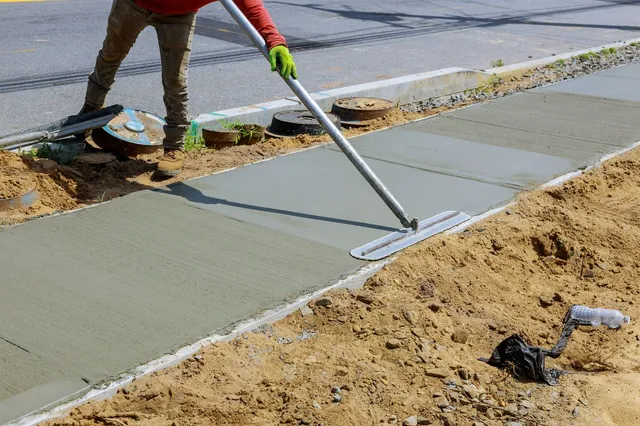Introduction to Concrete
Concrete is widely used in construction worldwide because of its durability and flexibility. From building robust foundation slabs to creating stunning architectural elements, concrete serves many purposes. Unsurprisingly, the website https://mcconnellassociates.org/concrete/ offers comprehensive insights into concrete applications and techniques, underscoring its prominence in construction. Concrete’s robustness and versatility make it indispensable in modern construction. This material is formed through cement, water, aggregates, and sometimes additional admixtures to provide specific properties. By exploring the different types of concrete available and their particular uses, we understand why this material remains a cornerstone in building projects worldwide, playing a crucial role in infrastructure development and architectural innovations.
Different Types of Concrete
Concrete isn’t a one-size-fits-all material; various types are tailored to meet specific needs. For instance, exposed concrete is functional and visually appealing, ideal for interior and exterior design. It showcases concrete’s natural texture and color, adding an aesthetic element without compromising functionality. Lightweight concrete offers benefits such as reduced structural load while maintaining durability. This type is especially beneficial in constructing high-rise buildings where reducing weight without losing structural integrity is essential.
Other kinds include high-strength concrete, designed for heavy-loading structures like bridges and large buildings, and self-compacting concrete, which flows effortlessly into tight areas and reduces labor costs. Each of these specialized types serves a unique purpose, addressing different challenges in construction. Additionally, the use of fiber-reinforced concrete, which incorporates fibrous materials to enhance durability and reduce cracking, illustrates the adaptability of concrete to various engineering demands.
Advantages of Using Concrete
Concrete’s primary advantage is its durability. It can endure severe weather, large weights, and fire. Minimal maintenance is required to keep concrete structures in good condition, often lasting several decades without significant deterioration. Its resilience is particularly beneficial in public infrastructure projects that demand long-term reliability and minimal disruption.
Concrete offers excellent thermal mass properties, contributing to building energy efficiency. It soaks up and retains warmth during the day and gives it off at night, naturally controlling indoor temperatures. This property can significantly reduce heating and cooling costs, making it an eco-friendly option for modern construction. Moreover, concrete’s fire-resistant nature adds an extra layer of safety in residential and commercial buildings, providing peace of mind to occupants.
Common Applications of Concrete
Concrete is used in various construction projects, from simple residential driveways to massive skyscrapers. Due to its strength and versatility, roads, highways, bridges, and commercial building complexes routinely use concrete. Its ability to be molded into different shapes and its compatibility with other building materials make it incredibly flexible in application. One of the most celebrated uses of concrete is creating durable and long-lasting roads. Highways utilizing concrete as a primary material often demonstrate superior performance and longevity compared to those made with asphalt. Concrete is also the material of choice for constructing robust and aesthetically pleasing bridges, exemplifying its structural and architectural capabilities. Furthermore, its use in high-rise buildings underscores its capacity to support immense loads and withstand environmental stresses, ensuring the stability and safety of towering structures.
Maintaining and Caring for Concrete
Regular maintenance is essential to preserving the durability and appearance of concrete. It involves routine cleaning to prevent dirt and debris buildup, sealing surfaces to shield them from moisture infiltration and chemical damage, and promptly repairing any cracks or damage that may appear. Sealing the surface of concrete can also help protect it from the adverse effects of freeze-thaw cycles, which are especially detrimental in colder climates.
Simple acts of care, such as removing stains quickly and avoiding harsh chemical cleaners, can go a long way in prolonging the life of a concrete structure. Frequent checking and prompt action can ensure its longevity and visual attractiveness. Hiring professional services for regular maintenance can improve the durability and performance of concrete installations, keeping them both functional and visually attractive for an extended period.
Innovations in Concrete Technology
Recent technological advancements have revolutionized the concrete industry. Notable innovations such as self-healing concrete, which employs bacteria to fill in cracks, are paving the way for more durable constructions. This development significantly reduces the need for repairs, enhancing the lifespan and reliability of concrete structures. Another groundbreaking accomplishment is the advent of 3D-printed concrete, which allows for precise and rapid construction of complex structures with minimal waste, promoting efficient use of materials.
These innovations are not only making concrete more efficient but also more sustainable, reducing waste and promoting eco-friendly construction practices. Modern techniques such as geopolymer concrete, which produces significantly lower carbon emissions than traditional Portland cement concrete, push the boundaries of what can be achieved with this age-old material. These advancements make concrete an even more indispensable component in contemporary construction, ensuring it meets evolving industry demands while addressing environmental concerns.
Environmental Impact of Concrete
Concrete has some environmental drawbacks, primarily due to its significant carbon footprint due to cement production. Cement manufacturing is a primary source of carbon dioxide emissions, contributing to climate change. However, various sustainable practices are being developed to mitigate these impacts, including innovations that use industrial byproducts such as fly ash and slag in concrete formulation, reducing reliance on Portland cement. Efforts like incorporating recycled materials into concrete mixes and improving the energy efficiency of cement production are steps in the right direction. For instance, developing low-carbon alternatives seeks to balance concrete’s immense benefits with a mindful approach to sustainability. These initiatives aim to decrease concrete’s carbon footprint, making it a more environmentally friendly construction material. Embracing these sustainable practices is critical to ensuring that concrete remains a viable and responsible choice for future construction projects.
Conclusion
Concrete remains a crucial material in modern construction, celebrated for its versatility and durability. As technological advancements continue to emerge, concrete applications expand, and its environmental footprint is being managed more effectively. Its consistent relevance in the construction sector emphasizes its crucial role in influencing the design of our constructed surroundings, offering a dependable and flexible base for infrastructure and architectural projects across the globe.






